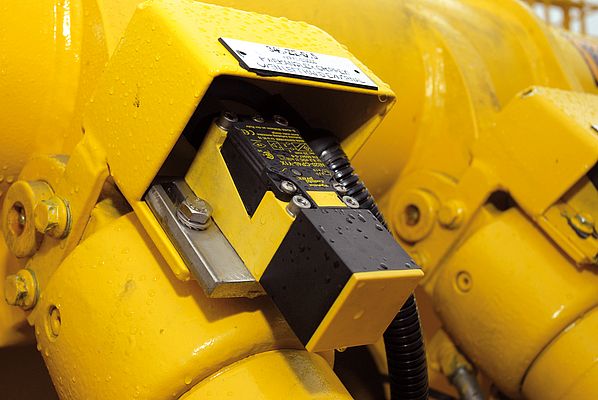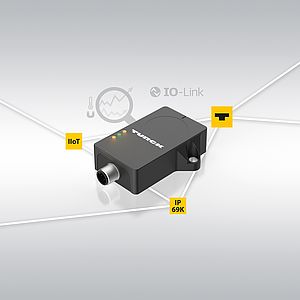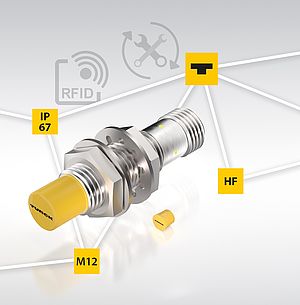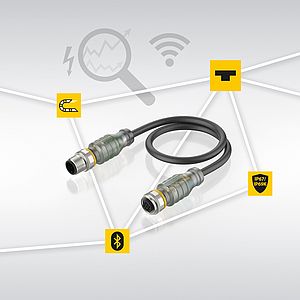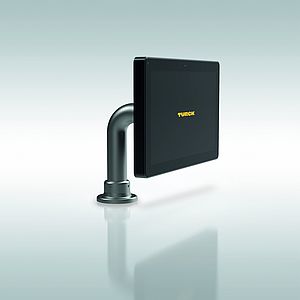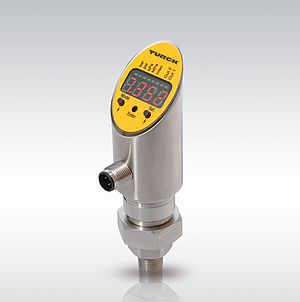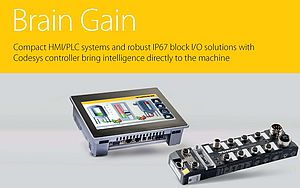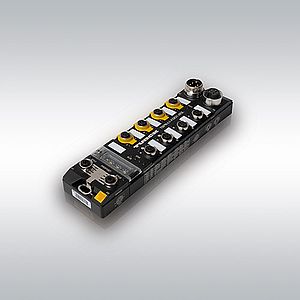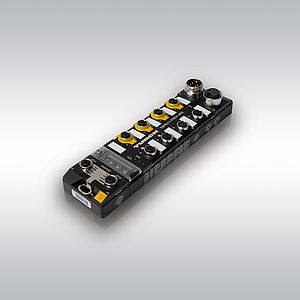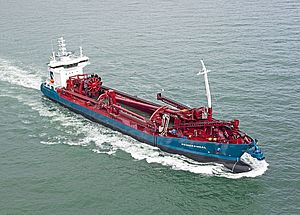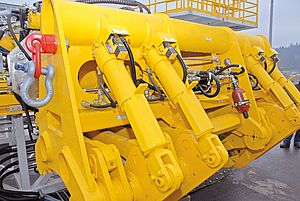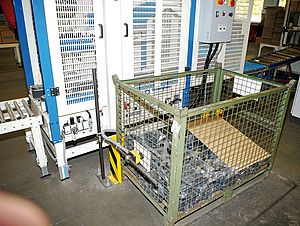To upgrade old offshore platforms in the North Sea to the newest standard, Streicher developed a drilling rig that is cost-saving, easy and safe due to its modular system and the maximum weight of 11 tons per module. ATEX-certified, inductive sensors from Turck measure numerous end positions.
Even with the decline of the resources, the market for oil and gas is still vital, which means that the petroleum industry has new challenges to face. They have to find access to new oil. Especially offshore, specialists suspect there is enough oil to make drilling profitable, even with the rising price for oil. Due to the offshore-boom, oil companies and plant manufacturers are building new platforms, and refurbishing existing offshore platforms.
The Streicher group, located in Deggendorf, Germany, is currently building its first drilling rig that can be used in water. The company has many years of experience in the development and production of rigs and platform technology. Their range of services in the rig and platform technology includes machines for deep drilling for petroleum, petroleum gas and geothermal energy, as well as horizontal drilling machines for the laying of piping without the need to dig. One of the most important customers for Streicher is their subsidiary company DrillTec GUT GmbH Großbohr- und Umwelttechnik, that is established in the field of exploration of hydrocarbon and geothermic resources and as a company for HDD-major projects.
Modular concept
For a long time, Streicher developed and produced only onshore-construction projects, but about two years ago, the company started to develop and construct their first offshore solution. This solution was ordered by a Norwegian company named Seawell, a well established drilling and well services company. The benefits of the of the Streicher construction is its modularity and the maximum weight of 11 tons per module, which ensures that the cranes on the platforms are able to lift the modules onto the platform safely.
Therefore, the construction is especially suitable for updating and exchanging older systems. ”In the North Sea, there are plenty of old platforms where the drilling rigs are not efficient any longer,” explains Hans-Peter Murr, who is responsible for the automation technology in the field of platform and rig technology. ”To update those machines and adept them to the newest standards would be extremely expensive, so it is cheaper for the customer to install new machines and constructions on the platforms.”
Employees assemble the single modules in a hall at the Streicher premises in Deggendorf first. After those preparations, the whole construction is built on open-air ground. After function and security checks and a training course for the customer, the construction is disassembled again and finally delivered to its destination. ”With our modular concept, old offshore platforms can be converted to a new standard faster than with any other solution,“ says Murr. ”The whole construction is tested, which guarantees high safety and only few disturbances at the start-up. The modular concept allows a fast installation on the platform within twelve days.”
Namur-Sensors for the Ex-area
To measure the final positions of the innumerable movable elements on the oil rig reliably, Streicher uses inductive sensors from Turck. About 60 sensors are used for the new construction. The cuboid-shaped proximity switches have a higher operating distance of 20mm on steel targets and fulfill all requirements for the offshore use. The Namur-sensors are approved for the ATEX category II 2 G, Ex-Zone 1 and fulfill the SIL 2 criteria in accordance with IEC 61508. Because of their special terminal chambers, the sensors are easy to install. ”We already used sensors from Turck for our onshore-constructions, because the company was one of the first manufacturers that could support us when it came to SIL and offer ATEX-able SIL 2 sensors,” Murr explains. ”Until now everything is going smoothly, Turck has not disappointed us.”
Solution-orientated partner
Turck could not only prove itself because of the reliability of its products, but also as an innovative, solution-orientated partner, especially when it came to a special challenge. To meet the SIL3- requirements, it was necessary to operate two parallel SIL 2-sensors at the drilling construction to check and monitor the position. Since the space in such construction is very small, the sensors had to be installed close to each other. This usually brings complications because inductive sensors influence each other.
”Turck supported us very well by constructing a sensor with a shifted oscillator frequency, so that we could install and operate two inductive sensors within close proximity without any problems. To recognize the changes of the sensor electronics at first sight under the tough offshore conditions, Turck marked the sensors with a different color,” says Murr. “And because of the good cooperation so far, it was easy for us to continue our teamwork with Turck for the current projects.”
Author: Achim Weber is a sales specialist at Turck Germany in Mülheim



